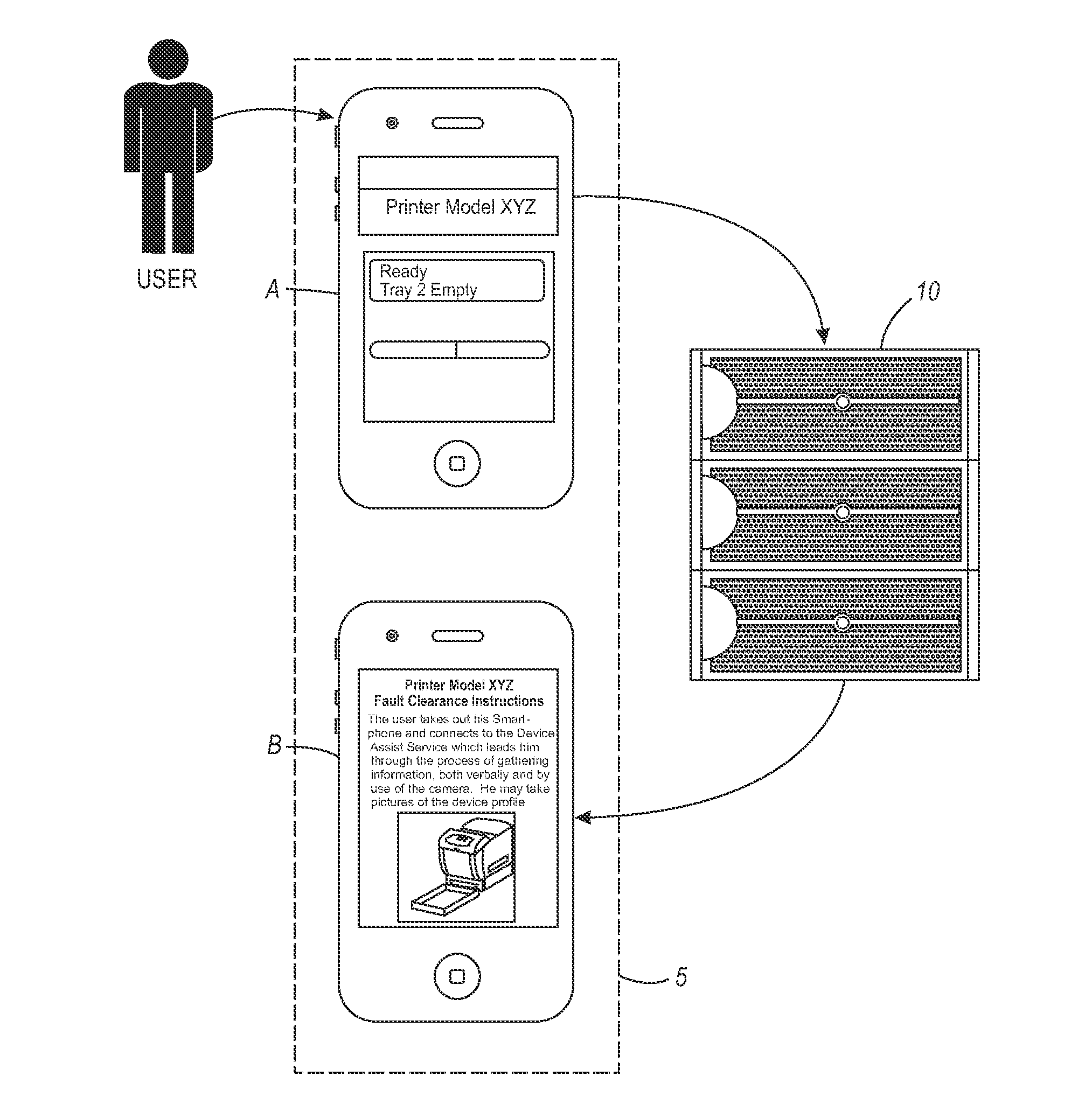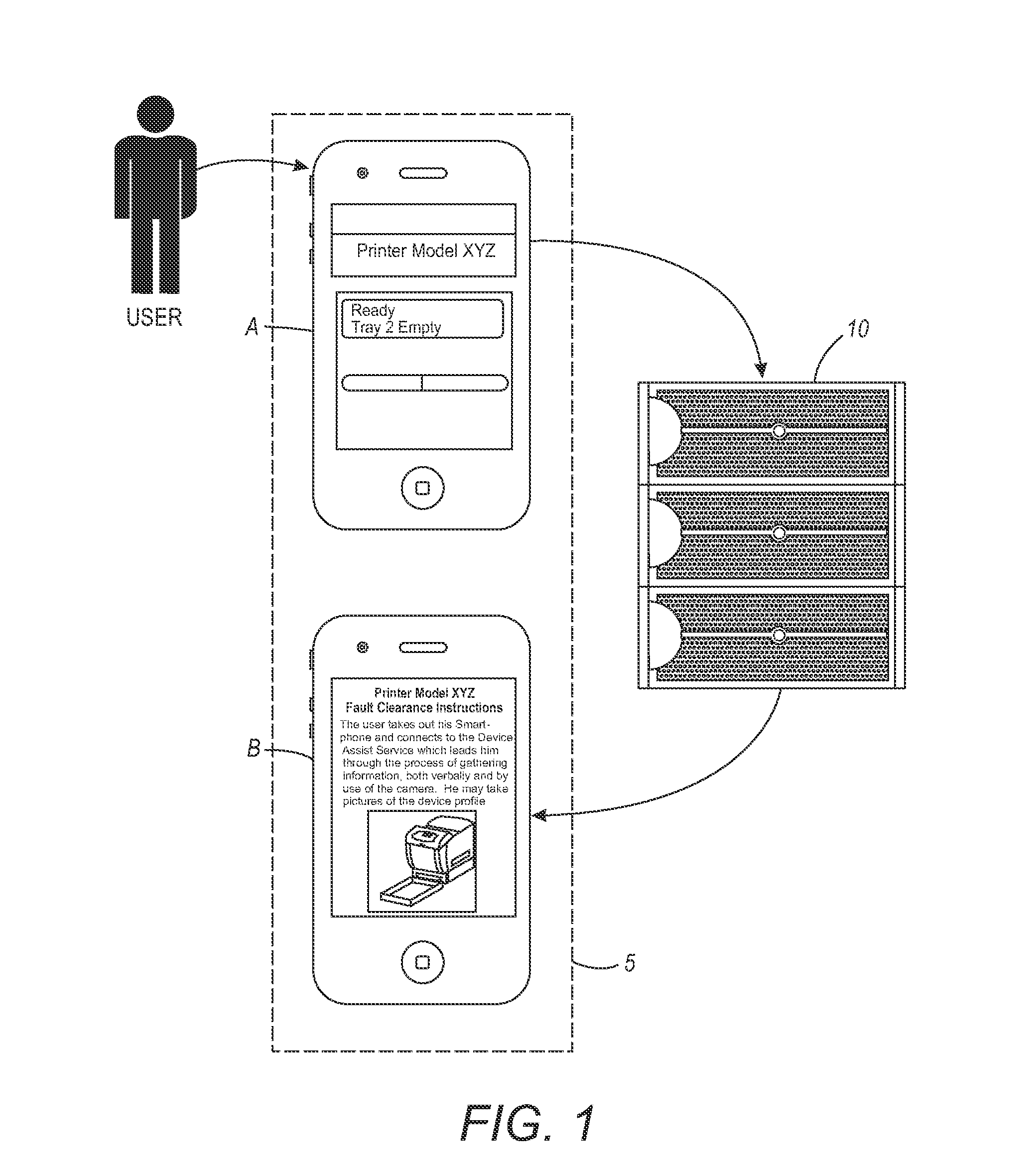Method and system for delivering device specific service documentation to a mobile platform
- Summary
- Abstract
- Description
- Claims
- Application Information
AI Technical Summary
Benefits of technology
Problems solved by technology
Method used
Image
Examples
Embodiment Construction
[0033]This disclosure provides methods and systems for delivering device specific service documentation to a mobile platform, such as, but not limited to, a smart phone. The mobile phone platform can provide several pieces of information including images of the devices, its serial number, its error condition along with voice input, and location as directed by the host application The results providing service information about the device are returned by voice and documentation.
[0034]Mobile devices with cameras have become ubiquitous. These devices provide a point of need capability to provide documentation to a user of a device, such as a printer. By utilizing the camera and image recognition technology, a picture is taken of a device and relevant documentation is delivered to the device on demand. Depending on the image captured, the delivered content can be generic or specific. For example, capture of information on the printer display can deliver relevant fault clearing instructi...
PUM
 Login to view more
Login to view more Abstract
Description
Claims
Application Information
 Login to view more
Login to view more - R&D Engineer
- R&D Manager
- IP Professional
- Industry Leading Data Capabilities
- Powerful AI technology
- Patent DNA Extraction
Browse by: Latest US Patents, China's latest patents, Technical Efficacy Thesaurus, Application Domain, Technology Topic.
© 2024 PatSnap. All rights reserved.Legal|Privacy policy|Modern Slavery Act Transparency Statement|Sitemap



